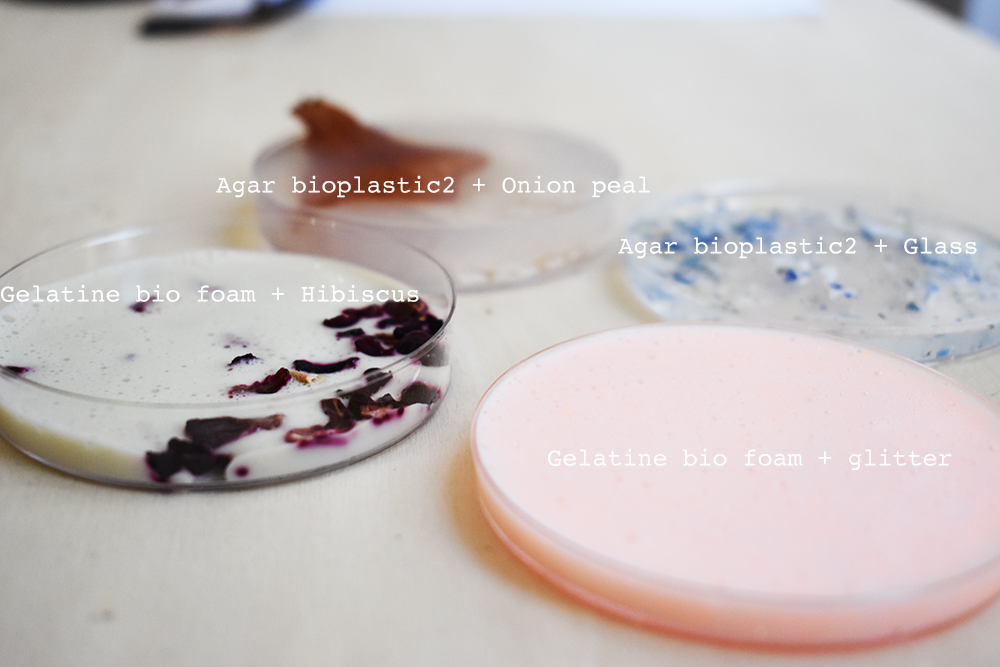W06. BIOMATERIALS¶
Here we are, Magic World of BIOMATERIALS. Through this week, I learned about Biomaterials pionneers, I really falled in love with. My team & I had lot of fun experimenting many recipes. The result: A full MIX OF COLORS & TEXTURES sometimes disgusting, sometimes super beautiful, an ATTRACTIVE EXPERIENCE for our senses. Thanks FabricAcademy!
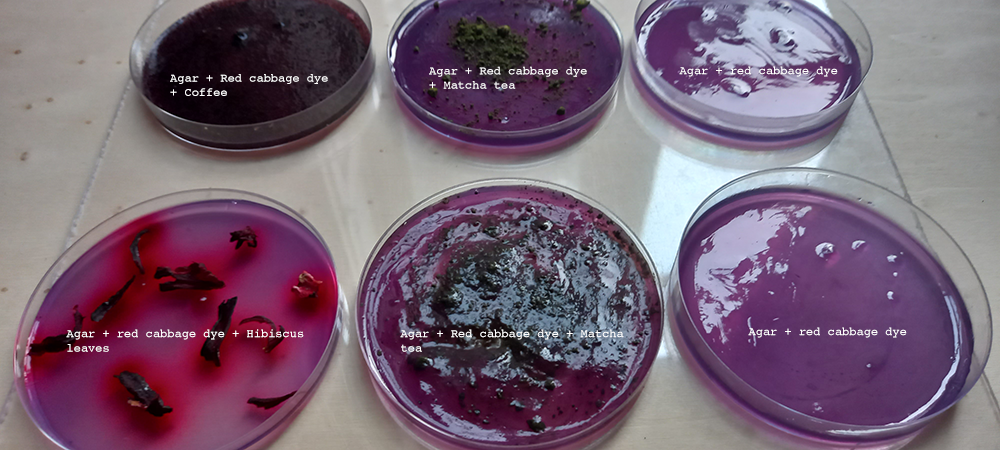
CHECK LIST
- -> Inspirations
- -> Produce one crafted and one grown material
- -> Document recipes
- -> Name materials&classify
PIONNEERS¶
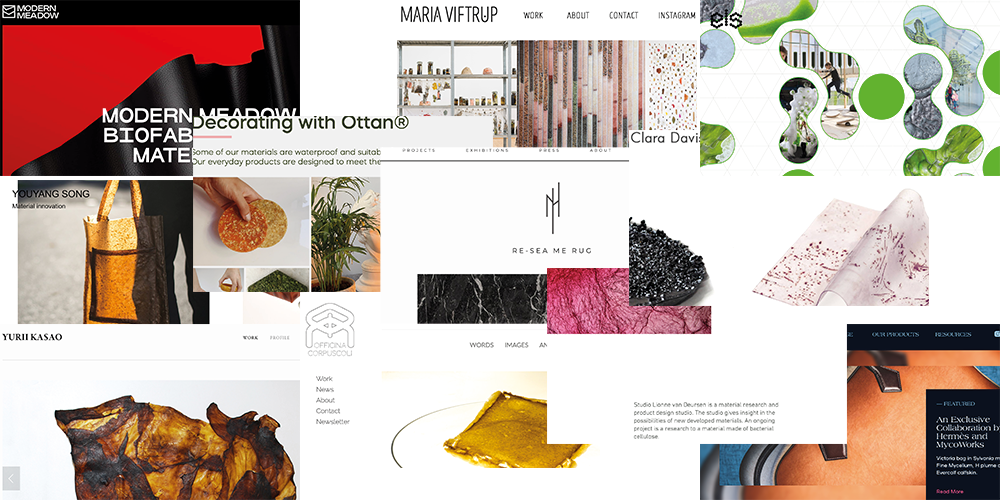
Ecologicstudio - Maria Viftrup - Clara Davis - Lionne van Deursen - Nienke Hoogvliet - Yurii Kasao - Officina Corpuscoli - Mycoworks - Ottanstudio - Youyang song - Modernmeadow - MaterialDriven
KEYWORDS¶

TOOLS & INGREDIENTS¶
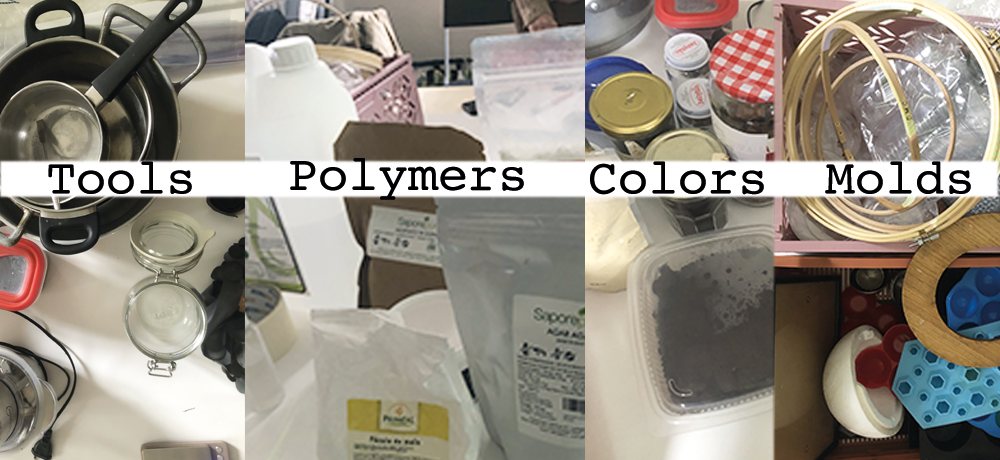
RECIPES & KEYWORDS¶
No mistakes, Material experimentations, Unexpected outcomes, Thanks Cecilia!
BIOMATERIALS DON'T LIKE HUMIDITY!¶
AGAR RECIPES¶
Agar Bioplastic is a mix of water, glycerine & agar-agar powder. It is an ecological plastic. It can be casted in very thin foils. The casted material is flexible.
1¶
| Agar-Agar | From Cookbook |
|---|---|
| Ingredients | Quantities |
| Agar | 5gr |
| Glycerol | 15gr |
| Water | 250mL |
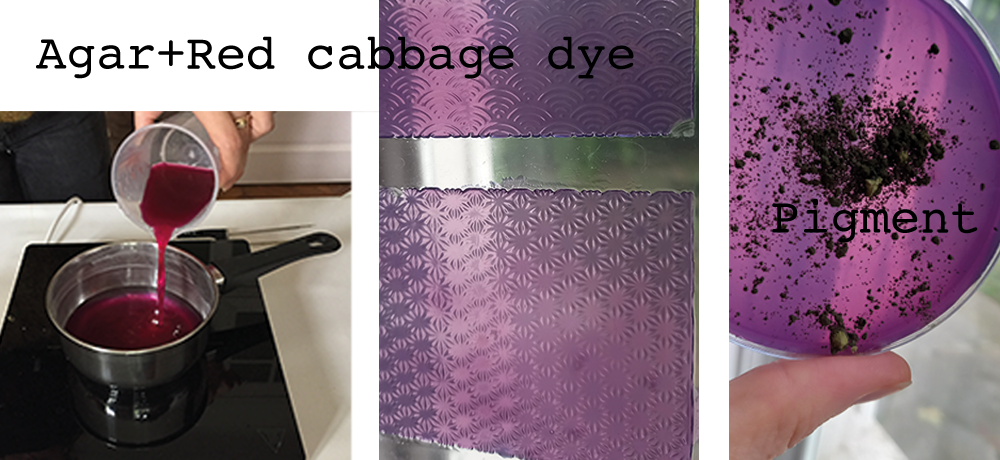 |
|
| How to | |
| 1. Warm up water | |
| 2. Around 40°C add plasticizer | |
| 3. Add agar | |
| 4. Mix till smooth | |
| 5. Simmer 30min more | |
| 6. Pour/cast |
Cook +/- 25 minutes at 80°C gives the best results * Drying: 20% of loss
-> Nice result, thin, transparent, colorful can be casted in various molds
2¶
| BIO-PLASTIC 1 | From Bio-fabricating materials |
|---|---|
| Ingredients | Quantities |
| Agar | 4gr |
| Glycerol | 25gr |
| Water | 400mL |
 |
|
| How to | |
| 1. Warm up water | |
| 2. Around 40°C add plasticizer | |
| 3. Add agar | |
| 4. Mix till smooth | |
| 5. Simmer 30min more | |
| 6. Pour/cast |
Cook +/- 25 minutes at 80°C add Hibiscus after casting
-> Luminiuous, very beautiful flower color diffusion
3¶
| BIO-PLASTIC 2 | From Bio-fabricating materials |
|---|---|
| Ingredients | Quantities |
| Agar | 4gr |
| Glycerol | 12gr |
| Water | 200mL |
 |
|
| How to | |
| 1. Warm up water | |
| 2. Around 40°C add plasticizer | |
| 3. Add agar | |
| 4. Mix till smooth | |
| 5. Simmer 30min more | |
| 6. Pour/cast |
Cook +/- 25 minutes at 80°C add carbon powder before casting
-> Pigment offer graphic adn to biomaterials
4¶
| CONDUCTIVE BIO-PLASTIC 1 | From Elisabeth Lorenzi* |
|---|---|
| Ingredients | Quantities |
| Agar | 2gr |
| Glycerol | 1mL |
| Salt | 5gr |
| Water | 240mL |
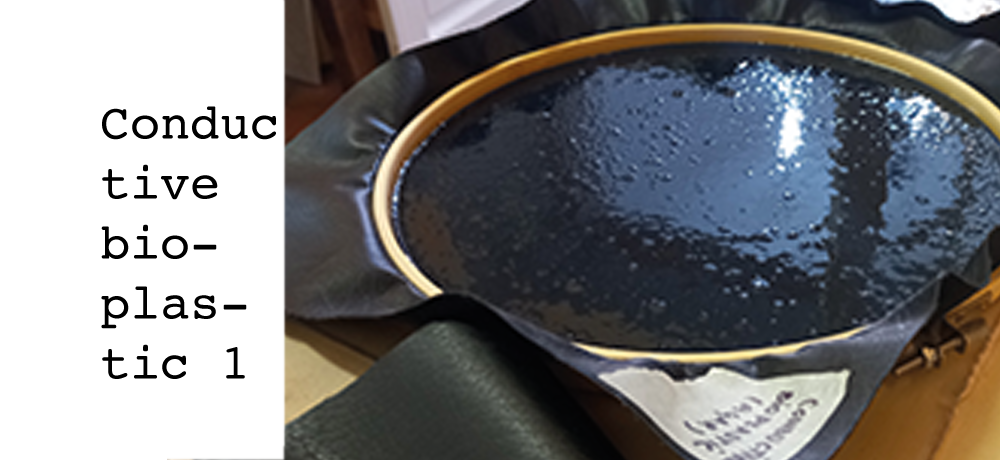 |
|
| *Materiom | |
| > -> Flexible sheet but fragile |
5¶
| CONDUCTIVE BIO-PLASTIC 2 | From Materiom |
|---|---|
| Ingredients | Quantities |
| Agar | 4gr |
| Glycerol | 12gr |
| Salt | 10gr |
| Water | 800mL* |
*misread the cardboard and put 800mL instead of 200mL but it is drying well so far
6¶
| STRETCH BIO-FOIL | From Bio-fabricating materials |
|---|---|
| Ingredients | Quantities |
| Agar | 3g |
| Gelatine | 20g |
| Glycerine | 15mL |
| Water | 400mL |
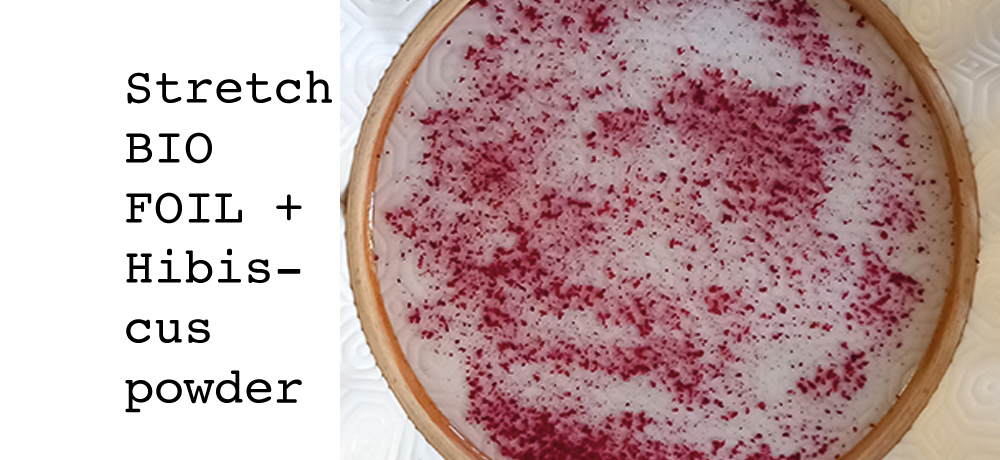 |
|
| How to | |
| 1. Warm up water | |
| 2. Around 40°C add plasticizer | |
| 3. Add agar | |
| 4. Mix till smooth | |
| 5. Simmer 30min more | |
| 6. Pour/cast |
Slow cooking +/- 45minutes at 80°C gives the best results
->Stretch & strong
ALGINATE RECIPES¶
Alginate bioplastic is: Alginate sodium + glycerine + water For curing (cook the bioplastic): Calcium chloride + water It is used for molecular cook.
| Flexible thin BIO-PLASTIC | From Bio-fabricating materials |
|---|---|
| Ingredients | Quantities |
| Alginate | 12gr |
| Glycerine | 20gr |
| Sunflower oil | 10gr |
| Water | 200ml |
| Spread solution for curing | |
| Sodium chloride hydrate/ Calcium Chlorure | 10ml |
| Water | 100ml |
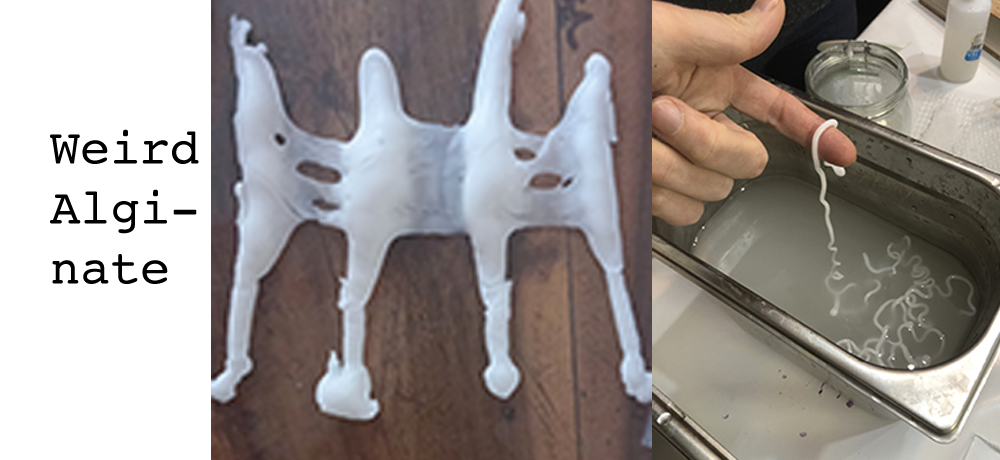 |
|
| How to | |
| 1. Mix alginate+water+glycerine with a mixer | |
| 2. Leave it for a night | |
| 3. Make a solution of water and 10% of calcium chloride in a spray bottle | |
| 4. Spray the mold | |
| 5. Pour/cast alginate | |
| 6. Spray after 5min | |
| 7. Once cured: rinse with clear water |
- if you want it to be transparent dont' add oil
- mix oil and pigment before adding to the solution
-> Love the mechanical property of this biomaterial
GELATINE RECIPES¶
Gelatine is collagen extracted from animals.
Gelatine bioplastics is made out of water and glycerine. Gelatine powder is sensitive to heat, and starts melting around 60°C. It is ideal cooking and recycling. For recycling to add water and cook it in order to re-hydrate and melt the mixture again. It can be casted again.
1¶
| BIO-RESIN | From Bio-fabricating materials |
|---|---|
| Ingredients | Quantities |
| Gelatine | 48gr |
| Glycerine | 8gr |
| Water | 240ml |
 |
|
| How to | |
| 1. Warm up dyed or plain water | |
| 2. Add plasticizer | |
| 3. Gently add gelatine | |
| 4. Mix slowly until smooth | |
| 5. Simmer 15-30 min | |
| 6. Pour will hot on surface | |
| 7. When face one is dry,turn it | |
| > Mix at 60°C until max 80 °C |
2¶
| BIO-FOAM | From Bio-fabricating materials |
|---|---|
| Ingredients | Quantities |
| Gelatine | 48gr |
| Glycerine | 12gr |
| Water | 240ml |
| Soap | 10ml |
| Water | 100ml |
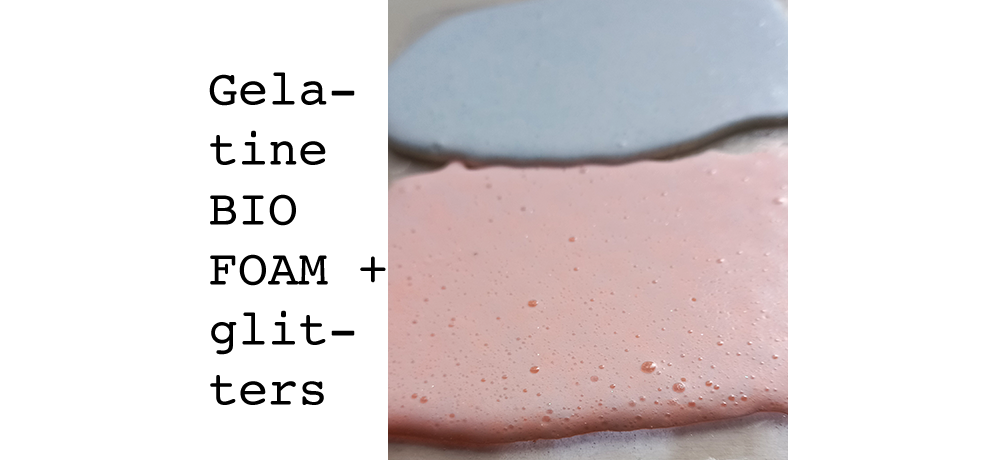 |
|
| How to | |
| 1. Warm up dyed or plain water | |
| 2. Add plasticizer | |
| 3. Gently add gelatine | |
| 4. Mix slowly until smooth | |
| 5. Simmer 15-30 min | |
| 6. Pour will hot on surface | |
| 7. When face one is dry,turn it | |
| > Mix at 60°C until max 80 °C |
- Tried 2 options one with Marseille liquid soap & one with glitters of Marseille soap. 1st option is the best for getting bubbles.
->Super nice result, colorful the texture is really squishy
KUZU RECIPE¶
| KUZU | From Materiom* |
|---|---|
| Ingredients | Quantities |
| Kuzu | 60 mg |
| Water | 120 ml |
| Glycerine | 10 mL |
| Vinegar | 10 mL |
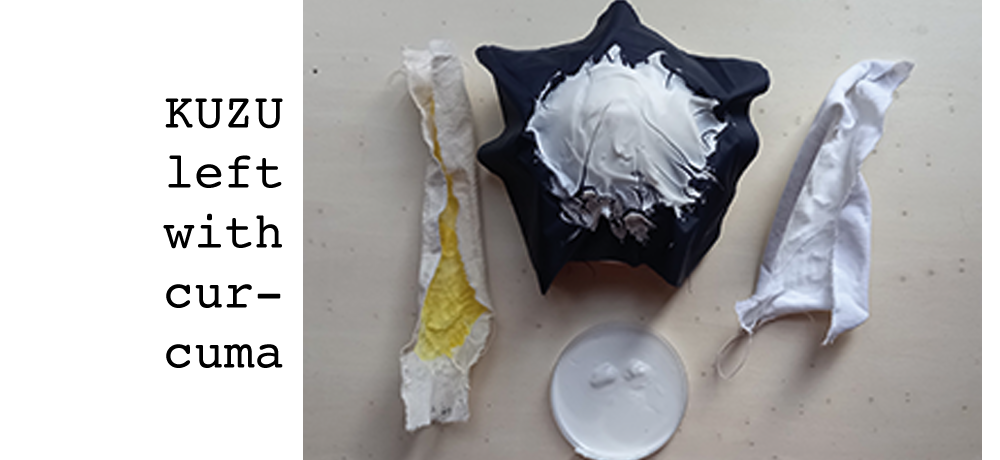 |
|
| Materiom | |
| From a tapioca starch recipe |
KOMBUCHA RECIPE¶
| Ingredients for 7L of water | |||
|---|---|---|---|
| Black tea (+ filter bag) | Sugar | Vinegar | Scouby mother |
| 21 gr | 700 gr | Vinegar - we added around 100 ml of vinegar untill it got to PH 3 | 15cm ø |
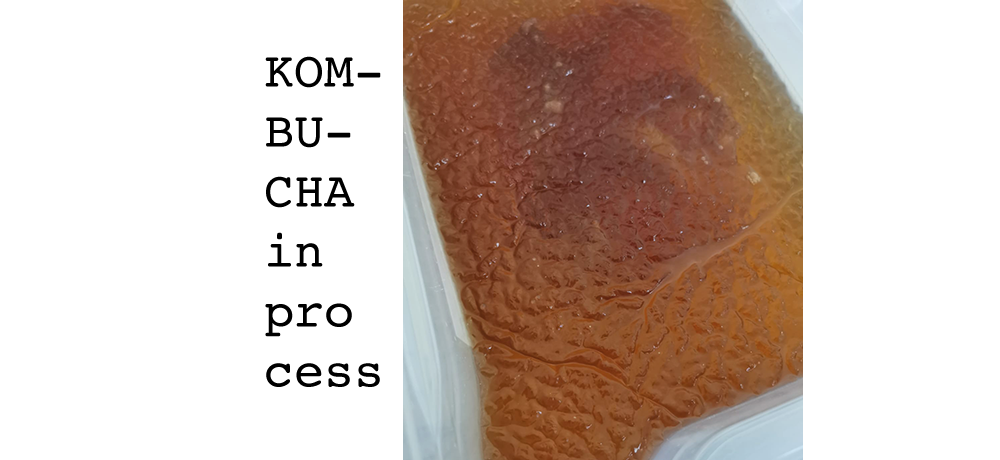 |
Steps: - Prepare all the ingredients, tools, utensils that you need at your workspace.
-
First we sterilise our equipment, especially the tray where you gonna grow your material and make sure that all is clean as Kombucha can get contaminated by various microorganisms around us.
-
We boil water in a pot and add tea into it and keep boiling a bit, in our case we didn't have extra pots, so we added boiling water directly in a plastic tray and then we added tea in a coffee filter bag closed with a thread that leaves don't go all over.
-
Then we add sugar and mix it well until it dissolves, the best to do is to add it while its hot, it will work better.
-
Now its time to let it cool down until room temperature, for us it took almost 2 hours for 7L of water. If we add Scoby into hot liquid it will most likely kill it, so we better wait.
-
When our liquid has reached the room temperature we meausure the PH with PH strips or PH meter, french tap water meauseres around PH 7. So we added around 100 ml of Vinegar until it got to PH 3.
-
And now when we set up good sweet, acicid conditions we can add our Mother Scoby, make sure you do it with gloves or desinfected hands.
-
We cover it with thin breatable cotton fabric that insects and dust can't get in, put elastic around that its well covered and can be easily open for our weekly check-ups.
-
Place it in a warm (ideally 30' degrees Celsium) temperature, we put it on a specail matrass for germination of seeds. The speed of growth depends on the temperature of the ambiance.
-
And the last important thing - don't move the tray while the Kombucha is growing, keep it in a dedicated place. The desired Kombucha material will appear in about few days - week as a thin layer. The second part of the Kombucha travel will be later on the Biomaterials week.
GRID SHEET FOR SAMPLES¶
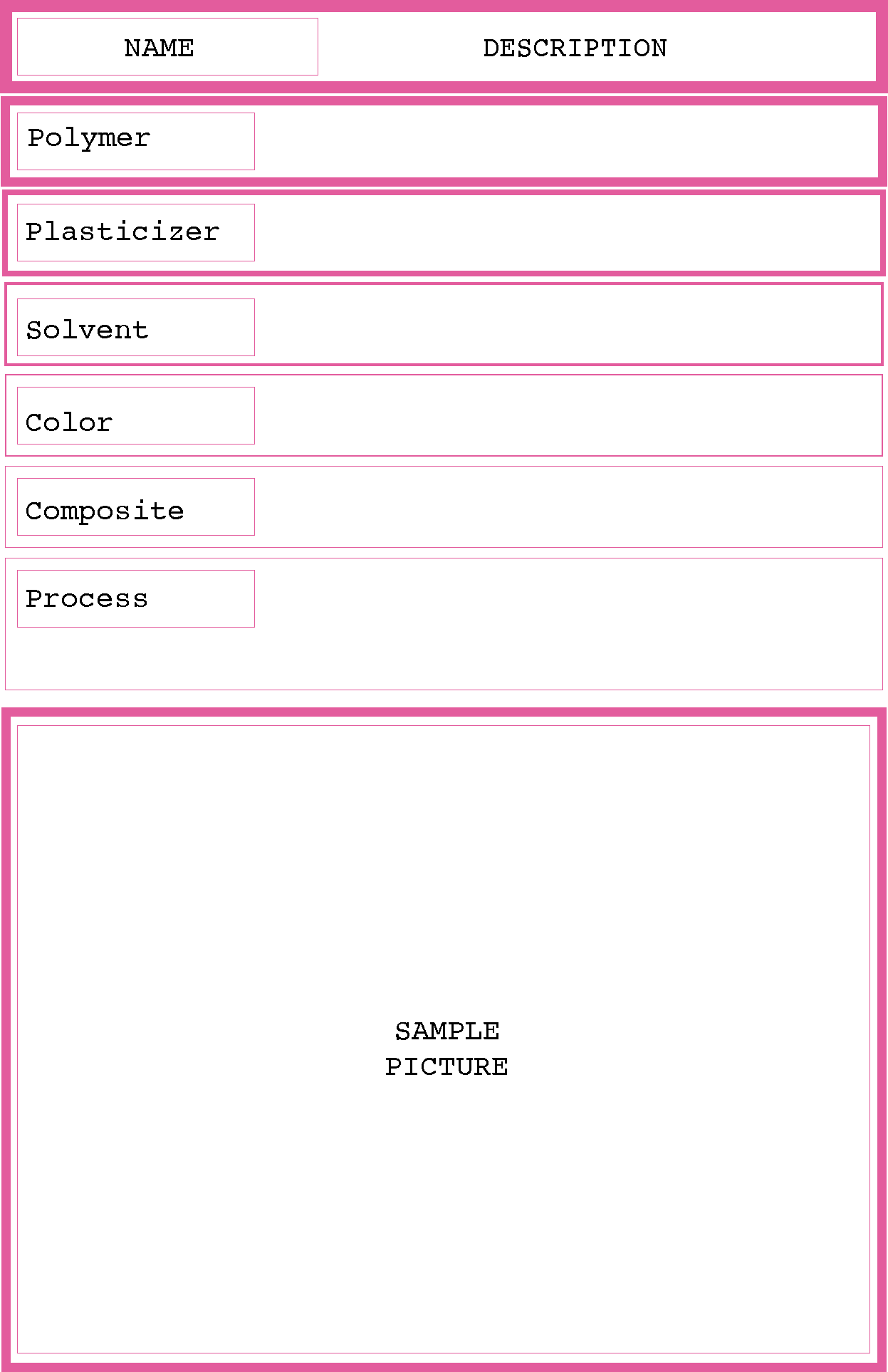
SUPER LINKS¶
JUST a START, I will go for composites/GLASS¶
->This experimentation went bad after drying due to the soft physical property of the Agar. The glass cut it when removing the sample of the mold.
